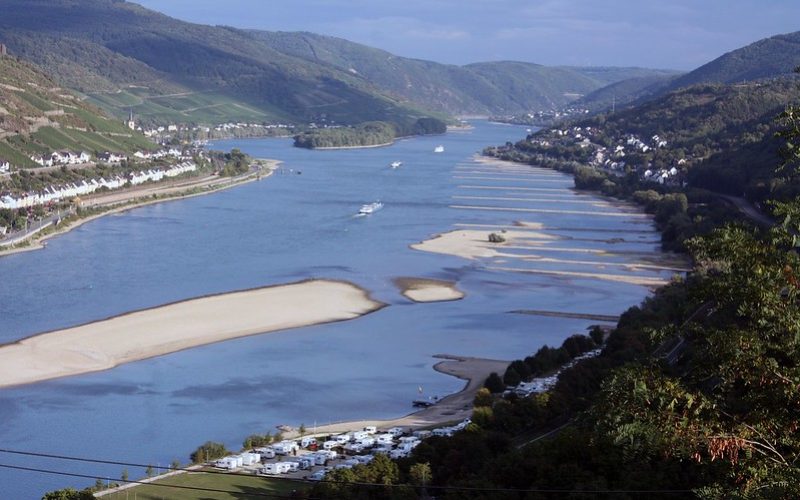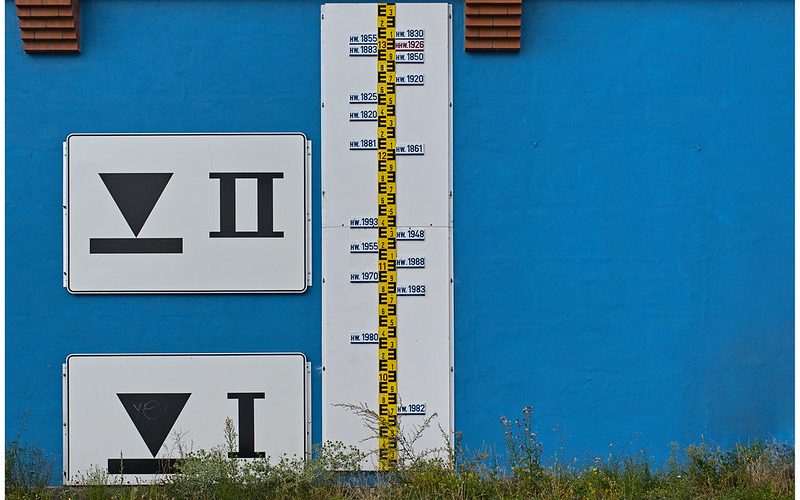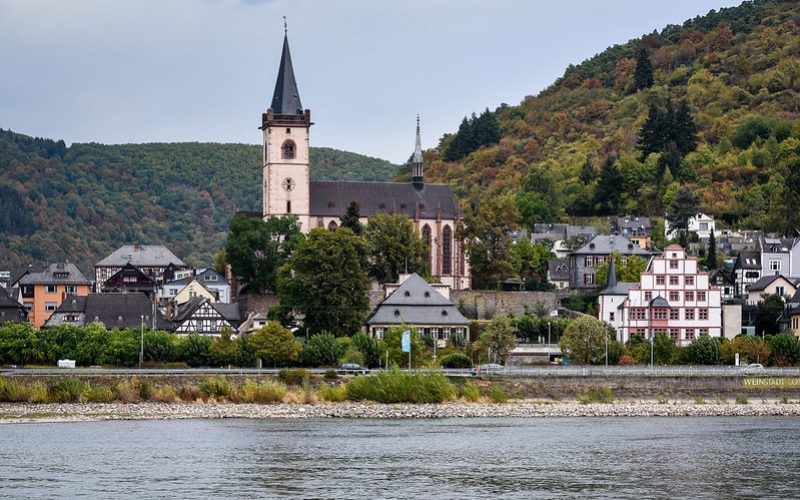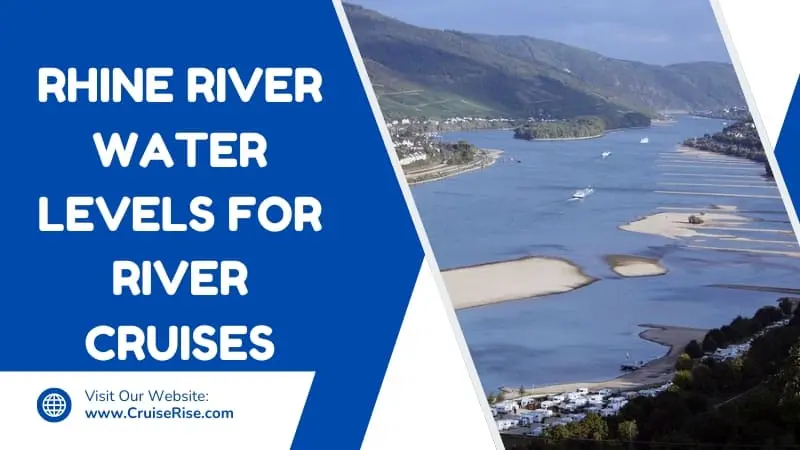Share this Article on:
Rhine River Water Levels for River Cruises: 5 FAQs Explained for Your Peace of Mind

Introduction: Understanding the Rhine's Importance
The Rhine River is a very important waterways of Europe. This river originates in the Swiss Alps and flows through six nations before entering the North Sea. In this article, we will go through the key aspects of Rhine river water levels for river cruises.This includes the impact of water levels and the techniques taken by cruise companies to ensure a pleasant experience for guests.
The Rhine River has a special place in the hearts of river cruise enthusiasts, because it is one the most important commercial as well as a picturesque route for breathtaking river excursions, In Europe. But, recent headlines have highlighted the issues caused by changing Rhine River water levels, raising anxiety among tourists.
Understanding the issue of Rhine River Water Levels for River Cruises
Water levels along the Rhine River are subject to seasonal variations, often influenced by factors such as,
- Snow melting in the Alps
- Precipitation patterns
While the situation of low Rhine river water levels for river cruises can disrupt navigation in certain sections of the river, it’s important to understand that these issues usually affect specific areas instead of the entire river.
Think of it as navigating detours in a bustling downtown area rather than facing a complete road closure. By understanding this distinction, travelers can approach Rhine River cruises with a clearer perspective, avoiding unnecessary concerns.
Understanding the seasonal patterns is the key

Understanding the seasonal patterns that influence Rhine river water levels for river cruises is essential for informed travel planning.
- Spring floods, caused by melting snow and increased rainfall, may lead to higher Rhine river water levels for river cruises in March, April, and May.
- Conversely, drier summers can result in lower water levels, particularly from late July through August.
Travelers should remain flexible and prepared for itinerary adjustments based on these seasonal fluctuations.
Cruise Line Strategies for Managing Water Levels
Cruise companies operating along the Rhine, take proactive steps to reduce the impact of Rhine river water levels for river cruises on guest experiences.
Adaptations to Lower Water Levels

What is beneath your river cruise ship’s hull, is important. In rare circumstances, there may be less than a foot of water below the keel. River cruise ships have extremely shallow drafts to begin with, and river cruise companies build their cruise ships as efficiently as possible.
However, low water conditions do exist which can wreak havoc on otherwise flawless cruises.
Ship Swap
If Rhine river water levels for river cruises, are too low, river cruise companies will use a ship swapping strategy. This approach involves transporting tourists from one town to the next by bus, before embarking aboard a sister-ship or comparable vessel for the rest of their trip.
Cruise trip turning to a Bus Trip
If things become bad enough, the river cruise may become a bus tour as the cruise operator tries to visit all of the key landmarks and attractions along the route. This generally entails putting visitors up at hotels on the cruise line’s expense. These changes guarantee that tourists may still enjoy the grandeur of the Rhine without being disrupted.
Complete cancellation
This is the most uncommon option, used when no other alternatives are available.
Adaptations to High Water Levels

During the spring, as the snow melts, it rains more frequently, and summer flash floods become a possibility; water levels rise, making a number of rivers inaccessible. Excess water levels may make it dangerous to continue. Much of this flooding occurs in April, however it can also interrupt sailings in May or June due to seasonal variations.
When Rhine river water levels for river cruises are excessively high, river cruise companies will frequently take the same precautions as when water levels are low: switch to bus tours and hotel stays, or ship swap.
In addition, cruise lines may respond to high water levels by closing sun decks, lowering ship railings, and maximizing water reserves to reduce ship draft when going under bridges.
Communication Challenges and Improvement Efforts
Effective communication by the Cruise staff is paramount in addressing challenges arising from water level fluctuations. Cruise lines continually strive to convey right information; ensuring guests are aware about itinerary changes and the reasons behind them. Despite proactive approaches, resolving water level issues often necessitates reactive measures due to the unpredictable nature of such occurrences. Continuous improvement remains a priority for cruise companies to enhance guest experiences and streamline response mechanisms.
Monitoring Water Levels for Informed Decisions

It is important for travelers considering a Rhine River cruise to remain well informed about the Rhine River’s water levels. While it’s impossible to predict water levels with certainty, resources such as online forums and weather forecasts provide valuable insights. Additionally, maintaining flexibility and understanding that cruise lines prioritize guest safety and comfort can alleviate concerns about potential disruptions.
Best Times to Cruise the Rhine
For travelers eyeing a Rhine River cruise, timing is everything. Late April until early June and September to early October regarded as prime times of year, offering ideal weather and fewer crowds.
However, cruise prices tend to reflect the popularity of these seasons. September particularly stands out, with the fall foliage painting central Europe in mesmerizing hues and fewer tourists crowding the sites.
Spring Rhine River Cruises

Despite the unpredictability of Rhine river water levels for river cruises in March, April, and May, spring presents a captivating time to witness Europe bursting with vivid colors, particularly the well-known tulip fields of the Netherlands.
Summer Rhine River Cruises
Summer temperatures along the Rhine can reach more than 100 degrees Fahrenheit. This peak season brings lively towns and landmarks, however with bigger crowds, making it a perfect time for sunbathers to enjoy panoramic views from riverboat decks.
Winter Market Cruises on the Rhine

For those enchanted by the holiday spirit, exclusive November and December cruises spotlight the timeless tradition of Christmas Markets along the Rhine. Each stopover boasts Old Towns adorned with festive decorations, offering travelers a glimpse into centuries-old holiday traditions.
FAQs
There are few questions asked by river cruise lovers regarding the issue of Rhine river water levels for river cruises. Lets discuss these.
FAQ #1: How to stay informed about Monitoring Water Levels?
Travelers can stay informed about water levels through resources like Cruise Critic forums and Rhine Forecast websites, which provide regular updates and forecasts.
FAQ #2: What are the reasons for Changing Water Levels?
Seasonal weather patterns, snow melting in the Alps, and heavy rains contribute to high Rhine river water levels for river cruises, while droughts and heat waves cause water levels to drop, with low water levels more common during late July through August.
FAQ #3: What is most Impacted Part of the Rhine?
The UNESCO-listed Middle Rhine Valley stands as the shallowest part, vulnerable to fluctuations in water levels.
FAQ #4: How the Extreme Water Levels situations are handled?
Cruise lines deploy various strategies, including ship swaps, coach buses between destinations, and even hotel stays to ensure the continuation of the itinerary.
FAQ #5: Can Cruises Really Sail Whenever Water Levels on the Rhine are Low?
River cruise ships have exceptionally shallow draughts, allowing them to navigate even when water levels are low or during a drought. In fact, river ships frequently continue sailing the Rhine even when large commercial barges stop their navigation across the river. Every river cruise companies track Rhine river water levels for river cruises and have strategies in place so that proper itinerary changes can be made if necessary.
Conclusion: Embracing the Adventure of Rhine River Cruising

Despite the problems offered by changing Rhine river water levels for river cruises, cruising the Rhine River is always an exciting and fulfilling experience.
Understanding the complexities of water level management allows tourists to go on their vacation with confidence, knowing that cruise lines are ready to adjust and provide an amazing exploration of Europe’s popular river.
Whether admiring the spring blossoms, experiencing the warmth of summer, or immersing oneself in the festive atmosphere of Christmas markets, the Rhine provides a timeless trip of discovery and magic.


you’re truly a just right webmaster. The site loading speed is incredible.
It sort of feels that you are doing any unique trick.
In addition, The contents are masterpiece. you have performed a great process onn this subject!
Thank you so much for your kind words! I’m thrilled to hear that you’re enjoying the site and finding the content valuable. I really appreciate your support and feedback—I’ll keep working to maintain the quality. Thanks again for stopping by!